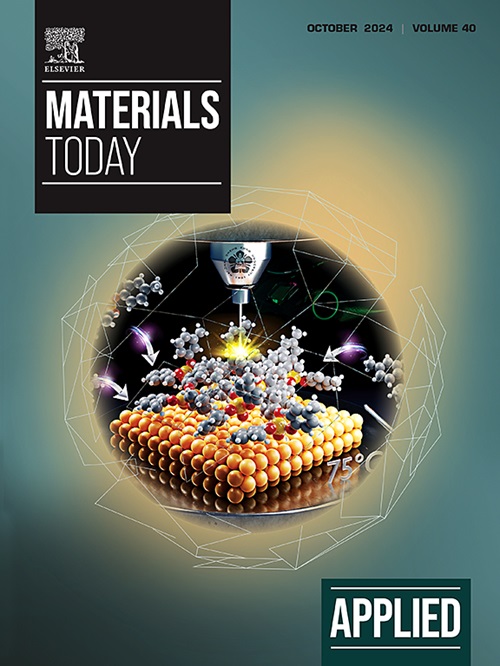Semiconducting polymer nanoparticles laden with platelet-rich plasma for endometrium regeneration via regulating macrophage M1/M2 type polarization
IF 6.9
2区 材料科学
Q1 MATERIALS SCIENCE, MULTIDISCIPLINARY
引用次数: 0
Abstract
Thin endometrium is linked to recurrent miscarriage and infertility. Reliable clinical strategies for endometrium regeneration are lacking. Human platelet-rich plasma (PRP), especially derived from umbilical cord blood, shows promising regenerative capabilities. Here, we designed a construct of the human umbilical cord blood-derived PRP and the as-synthesized semiconducting polymer nanoparticles (SPNs) for promoting endometrial regeneration and fertility restoration following in situ microinjection in a rat model of endometrial damage. The mechanistic basis for the regenerative benefits of these PRP-SPNs was also assessed, with a particular focus on the regulation of macrophage activity. , PRP-SPNs treatment was sufficient to enhance the proliferation of human endometrial stromal cells. , PRP-SPNs administration induced robust endometrial proliferation, re-epithelialization, and angiogenic activity while inhibiting localized fibrosis. Critically, the regenerated endometrium exhibited enhanced receptivity such that it was conducive to higher rates of implantation and fetal development. At the cellular level, PRP-SPNs were found to promote the polarization of CD163+ M2 macrophages while coordinating the induction of more effective anti-inflammatory responses and . Together, these results suggest that PRP-SPNs represent a safe, effective, noninvasive approach that can be conveniently implemented to remediate thin endometrium and restore fertility for patients in need.富含血小板血浆的半导体聚合物纳米粒子通过调节巨噬细胞 M1/M2 型极化促进子宫内膜再生
子宫内膜薄与反复流产和不孕症有关。目前尚缺乏可靠的子宫内膜再生临床策略。人血小板丰富血浆(PRP),尤其是脐带血中提取的血小板丰富血浆,显示出良好的再生能力。在此,我们设计了一种由人脐带血提取的血小板丰富血浆和合成的半导体聚合物纳米颗粒(SPNs)组成的构建物,用于在子宫内膜损伤的大鼠模型中进行原位显微注射,促进子宫内膜再生并恢复生育能力。此外,还评估了这些 PRP-SPNs 促进再生的机理基础,特别是对巨噬细胞活性的调节。结果表明,PRP-SPNs 处理足以促进人类子宫内膜基质细胞的增殖。PRP-SPNs可诱导子宫内膜增殖、再上皮化和血管生成活性,同时抑制局部纤维化。重要的是,再生的子宫内膜显示出更强的接受能力,从而有利于更高的植入率和胎儿发育。在细胞水平上,PRP-SPNs 可促进 CD163+ M2 巨噬细胞的极化,同时协调诱导更有效的抗炎反应和.PRP-SPNs。总之,这些结果表明,PRP-SPNs 是一种安全、有效、无创的方法,可以方便地修复薄的子宫内膜,使有需要的患者恢复生育能力。
本文章由计算机程序翻译,如有差异,请以英文原文为准。
求助全文
约1分钟内获得全文
求助全文
来源期刊

Applied Materials Today
Materials Science-General Materials Science
CiteScore
14.90
自引率
3.60%
发文量
393
审稿时长
26 days
期刊介绍:
Journal Name: Applied Materials Today
Focus:
Multi-disciplinary, rapid-publication journal
Focused on cutting-edge applications of novel materials
Overview:
New materials discoveries have led to exciting fundamental breakthroughs.
Materials research is now moving towards the translation of these scientific properties and principles.
 求助内容:
求助内容: 应助结果提醒方式:
应助结果提醒方式:


